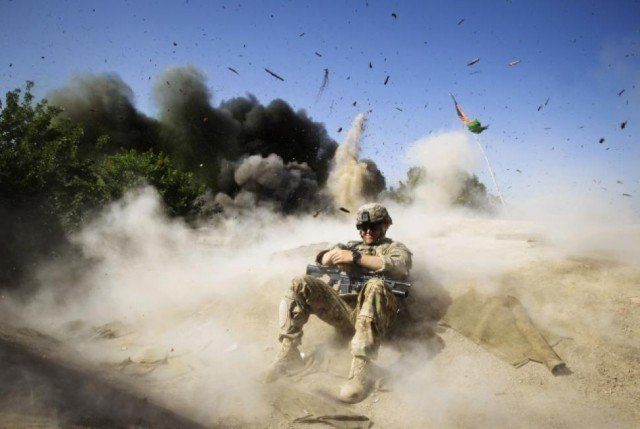This story originally appeared at Foreign Policy.
The last year was a bad one for international peace and security. Sure, there were bright spots in 2014. Colombia’s peace process looks hopeful. The last round of Iran’s nuclear talks was more successful than many think. Tunisia, though not yet out of the woods, showed the power of dialogue over violence. Afghanistan bucked its history and has, notwithstanding many challenges, a government of national unity. President Barack Obama’s restoration of diplomatic relations with Cuba can only be positive.
But for the most part, it has been a dispiriting year. Conflict is again on the rise after a major decrease following the end of the Cold War. Today’s wars kill and displace more people, and are harder to end than in years past.
The Arab world’s turmoil deepened: The Islamic State captured large swathes of Iraq and Syria, much of Gaza was destroyed again, Egypt turned toward authoritarianism and repression, and Libya and Yemen drifted toward civil war. In Africa, the world watched South Sudan’s leaders drive their new country into the ground. The optimism of 2013 faded in the Democratic Republic of the Congo (DRC), Ebola ravaged parts of West Africa, and Boko Haram insurgents stepped up terrorist attacks in northern Nigeria. The international legal order was challenged with the annexation of Crimea by Russia, and war is back in Europe as fighting continues in eastern Ukraine.
So what do the last 12 months tell us is going wrong?
On a global level, increasing geopolitical competition appears, for the moment at least, to be leading to a less controlled, less predictable world. This is most obvious, of course, with regard to the relationship between Russia and the West. It’s not yet zero-sum: The two nations still work together on the Iran nuclear file, the threat of foreign terrorist fighters, and, for the most part, on African peacekeeping. But Russia’s policy in its neighborhood presents a real challenge, and its relationship with the United States and Europe has grown antagonistic.
China’s relations with its neighbors also remain tense and could lead to a crisis in the East or South China Seas. The struggle between Iran and Saudi Arabia shapes the contours of violence between Sunnis and Shiites across the Middle East. Major Sunni powers are themselves divided: The contest between the Saudis, Emiratis, and Egypt on the one hand, and Qatar and Turkey on the other, plays out across North Africa. Elsewhere on the African continent, powers jostle in Somalia and in South Sudan’s increasingly regionalized war; and the DRC has long been a venue for its neighbors’ competition over influence and resources.

COMMENTS
Please let us know if you're having issues with commenting.